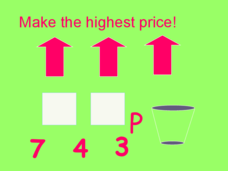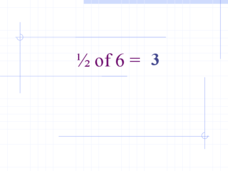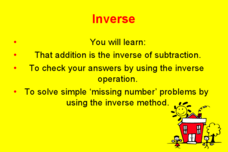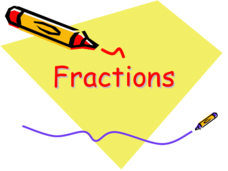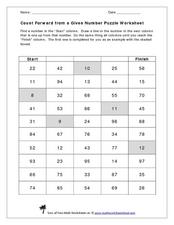Curated OER
Number Bonds to 10: Word Problems
Young mathematicians work through five story problems that reinforce number bonds to 10. They will read each problems then see the associated addition or subtraction equation for each.
Curated OER
Money Place Value
Play this place value game with or with out the context of money. As your click-through the slides, numbers appear, learners use the numbers given to make the largest number to win. This game can be used to reinforce monetary value or...
Curated OER
Money Problems: Pounds and Pence
Teaching youngsters how to handle money is a great way to bring math to life. This series of problems encourage learners to use problem solving strategies such as, underlining, and circling information to solve. Note: This resource was...
Curated OER
Find the Difference Between Two Numbers
Perfect for younger elementary learners, this slide-show uses images of unifix cubes to show the process of subtraction. There is a complete example and five practice problems learners can complete as you progress through the resource.
Curated OER
Multiply by 10, 100, 1000
It can be fun to multiply by 10, 100, or 1000! Present all the info needed to make your class multiplication masters. They work through several examples, then take a one minute speed test. This resource comes with a built-in timer that...
Curated OER
Multiplication Word Problems
You can use this resource to introduce younger learners to word problems involving multiplication. The concept is described, and example is provided, and then they can practice by solving each of the three practice problems provided. The...
Curated OER
Finding Quarters
How do you find a quarter of a given number? The class will see how easy it can be, as they first find 1/2 of a given set of numbers. They are then encouraged to find 1/2 again, which of course is 1/4. A great strategy for learners just...
Curated OER
Divide or Multiply by 10
Help your kids see what happens when you multiply or divide any number by 10. As they work through this slide-show, they will multiply or divide each number by 10 as indicated. Discuss what patterns they see, what happens to each number....
Curated OER
Division: Using a Number line
Provide learners with a problem solving strategy to help them solve simple division problems and build a better understanding of the relationship between multiplication and division. They use a number line and jump up by the divisor,...
Curated OER
First Grade Math
In this math assessment worksheet, students answer 25 multiple choice questions that pertain to all math skills in grade one.
Curated OER
Doubling and Halving
A cute square-headed robot is here to help your class understand doubling and halving. Numbers go in his head and come out his ear doubled. Those same number then go in his ear and come out his head halved. This is a great way to show...
Curated OER
Fractions (2)
Review or introduce your younger learners to simple fractions. They work through fifteen different problems, where the shaded amount must be identified as a fraction. For each problem an answer is included on the following slide. Tip:...
Curated OER
Inverse
Your class can learn all about inverse operations. They will review what inverse operations are, see examples, learn how to use inverse operation to check an answer, write addition and subtraction equations in the inverse, and use the...
Curated OER
Fraction Shape Amounts
Part/whole relationships mean it's time to practice fractions. This slide-show makes reviewing fractions a colorful and fun activity. Learners work through the first seven slides to identify the shaded amount, solve two parts of a given...
Curated OER
Tens and Ones Guided Lesson
Understanding place value will open up a world of math comprehension for your learners. There are three parts to this worksheet, all with the objective of revealing the decomposition of numbers into tens and ones. First, scholars examine...
Curated OER
Count Forward from a Given Number Puzzle Worksheet
Practice counting on from a given number using this puzzle worksheet. There are 10 starting numbers in the first column, and learners follow them through four columns, counting by ones to find the next number. Although the instructions...

